Nongshim: How the Korean Spicy Empire Makes Great Strides within the U.S. Market
The Italian name their national cuisine as spaghetti whilst the Korean name it as Ramyun (more commonly spelled as “ramyeon”). With a uniquely Korean spicy taste, Ramyun has captivated the world’s appetite, including the United States. When it comes to a Ramyun brand sought after by the consumers across the nation, it’s too hard to miss Nongshim with its “Shin Ramyun” that has established itself as a byword for the Korean food wave by becoming the first Korean food brand to enter more than four thousand Walmart stores across the U.S. in 2017.
Notably, this Korean spicy Ramyun behemoth does ramp up overseas push amid the COVID-19 pandemic. Whilst the global pandemic arguably wreaks havoc to almost all industries and sectors, the food-maker appears to be entirely insulated from the fallout of the COVID-19 outbreak.
So, what are the hidden secrets behind such a robust prominence? How about Nongshim’s strategy for its phenomenal and sustainable growth? Let’s read on to find out.
Nongshim: The Korean Entrepreneur’s Bet Big
The glorious success story of Nongshim was written by Shin Choon-ho, who is world-renowned as the king of instant noodles.
Born in 1930 in the South-Eastern port city of Ulsan, Shin Choon-ho was the third in a family of 10 siblings and served in the military as a police officer during the Korean War. After graduating with a law degree in 1958, he joined Lotte – his brother’s confectionery business in Japan and developed a keen interest in instant noodles, which was gaining popularity.
Whilst his older brother thought it was a terrible idea, Shin Choon-ho had a hunch that instant Ramyun noodles could become a huge and profitable business, thereby establishing a company to make them. Despite his brother’s opposition, he bet that the rapid industrialization of Korea, shifting population from the countryside to the cities, would fuel demand for simple recipes.
Shin Choon-ho ended up building out his own business in the mid-1960s with seed money of 5 million won to develop Korean noodles and snacks that are different from the Japanese varieties. The company’s first product, launched in 1971, was Saewookkang (prawn crackers), apparently, a Korean take on Japanese company Calbee’s Kappa Ebisen (prawn chips) yet made with rice rather than wheat.
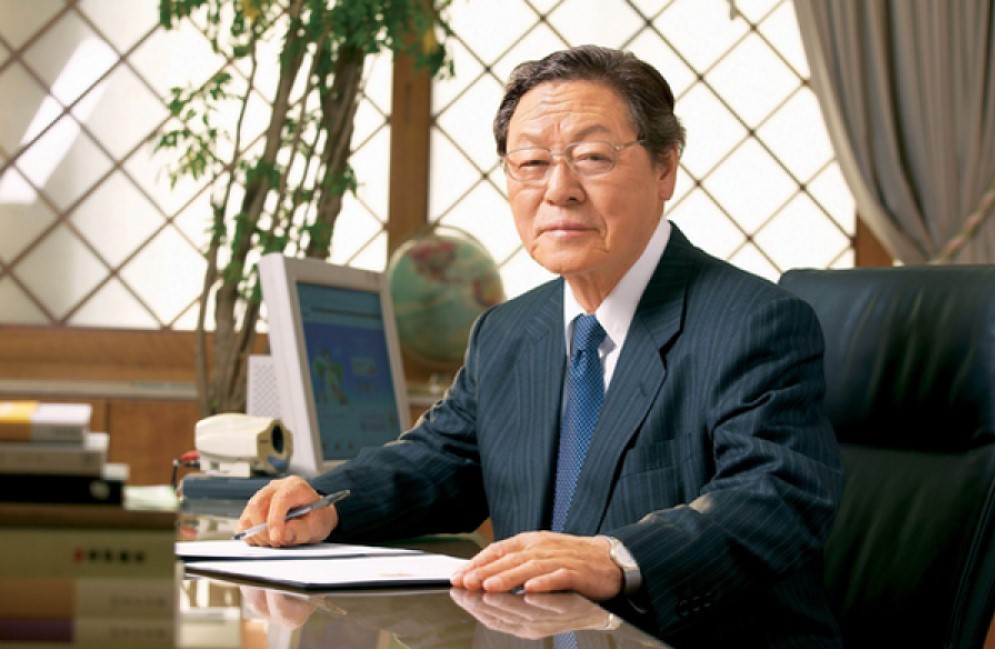
As written by the Nongshim’s founder in his memoir, “It was difficult starting out. I sweated profusely in the middle of summer struggling with the dough next to the iron pot.” In the very first years, there was Samyang Foods that had a near monopoly on the South Korean market for instant noodles, thus, many of Nongshim’s early products flopped.
As a latecomer, the food maker’s initial business strategy was to follow leaders in Japan where instant ramen noodle was first produced, but Nongshim did not stop at just copying Japanese tastes since it adapted the product to Korean food culture and created its own market in Korea. In pushing its way to dominance in this market, Nongshim exhibited great powers of tenacity, known in Korea as the “seven-down, eight-up” spirit, which means when one falls down seven times, the one should rise up eight times. By virtue of its endless efforts with this spirit, Nongshim finally becomes the Korean food wave leader.
With a solid commitment to creating noodles with a uniquely Korean spicy taste, Shin Choon-ho led a team of researchers in experimenting with various recipes, testing more than 20 types of chili before inventing the iconic red-packaged Shin Ramyun.
“I’m not trying to sell noodles using my last name,” stated Shin Choon-ho upon the product launch in the mid-1980s. “Shin is just a short and simple way to say spicy.” And more than three decades on, this spicy Shin Ramyun has become synonymous with Korean instant noodles.
Actually, this signature product has marked the glorious success milestone along Nongshim’s growth trajectory, garnering a lot of popularity not only in Asia countries but also in the U.S., Canada, and even in South America, thereby solidifying its presence as a global brand.
“Chairman Shin always chose a path that other people would not go, and he introduced groundbreaking products that would go on to change history,” stated Park Joon, Nongshim vice-chairman. If there’s anything I learnt under his shadow, it’s his philosophy to contribute to society by making delicious food and to dream to become world No. 1 with Ramyun.”
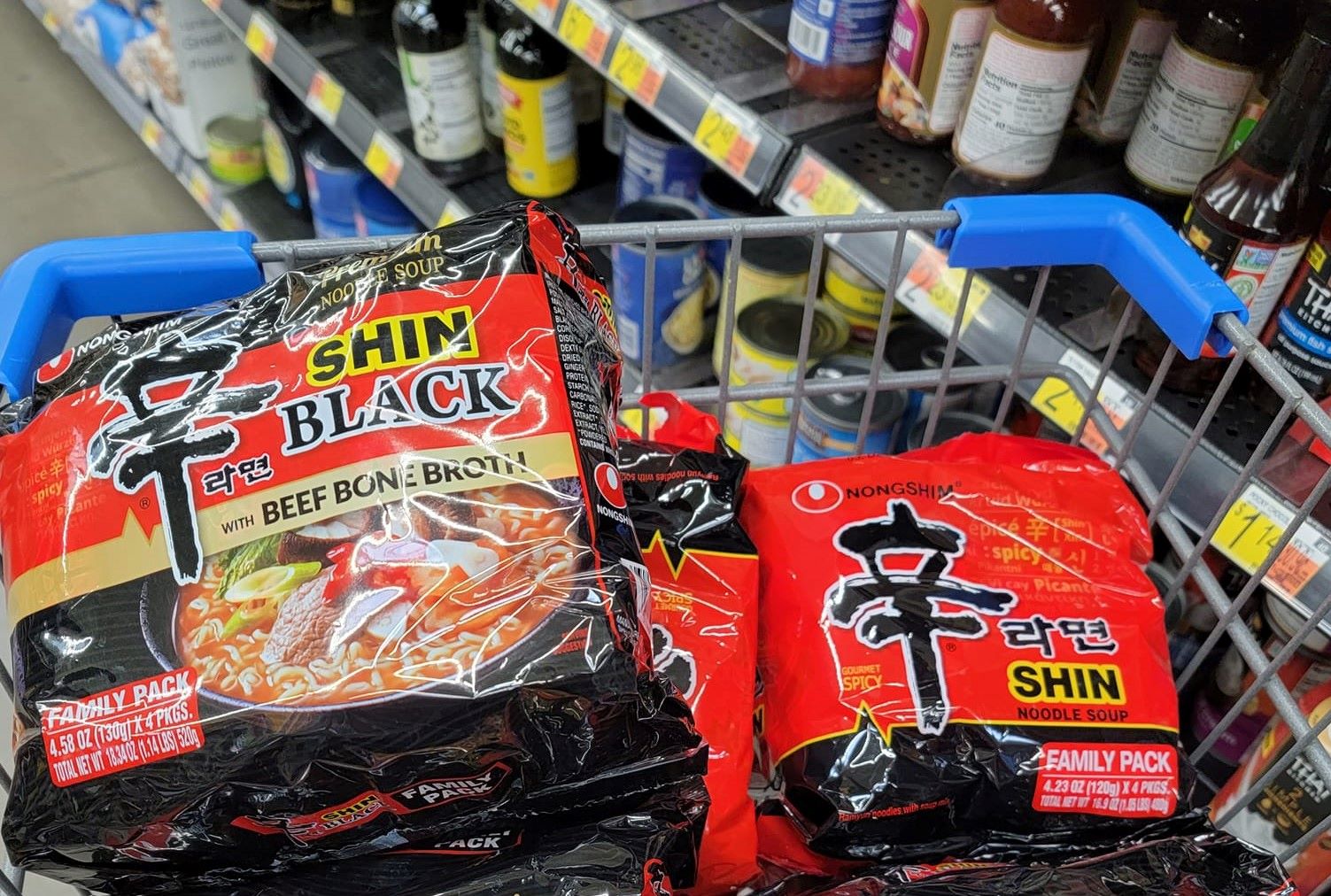
Nongshim’s Shin Ramyun: The Korean Brand Captivating the U.S. Taste
Its Brand Presence in The U.S.
Nongshim began exporting to the U.S. in 1971, starting with stores catering to Asian Americans. The Ramyun maker established a factory in Los Angeles in 2005 and relentlessly worked its way into American supermarkets, which included Costco Wholesale, Kroger and Walmart. At present, the largest overseas market for Nongshim is the United States, which even surpasses the Chinese market.
“Interest in Asian culture is growing in the U.S. as the composition of races has become diverse and Asian Americans’ incomes have increased,” Shim Eun-ju, an analyst at Hana Financial Investment Co., stated in a report. This explained why Nongshim’s Korean brand was welcomed from their first days of entering the market.
“We are the number one food company in Korea such as Nestle and Campbell of US. We built up our manufacturing facility in Rancho Cucamonga, CA in 2005 and current sales are about $330M with manufacturing around 3 billion units per year,” stated Kevin Chang, Nongshim’s Marketing Director.
“Since we started supplying Shin Ramyun to all Wal-Mart stores in the United States in 2017, we have been building a strong distribution network in the mainstream market in the United States. Nongshim is one of the few foreign food brands sold throughout the United States.”
Its brand recognition was in part bolstered by the popularity of the Oscar-winning film “Parasite,” as a signature noodle dish from the movie, called Chapaguri, was made with a combination of two of its popular instant noodles.
A Magical Spike in Ramyun Sales amidst the Black-Swan Corona Virus
Whilst many other corporations suffer from the global and national economic lockdown, their performance has been gaining traction on the back of virus fears.
As of July 2020, Nongshim announced that sales of its U.S. subsidiary reached an all-time high of an estimated $164M in the first half of 2020, up 35% from a year earlier.
The Ramyun maker’s robust business performance within this market can be attributed to brisk sales of its instant noodle products in the U.S. mainstream, with its Shin Ramyun becoming a favorite food for local residents. The spread of COVID-19 has further boosted demand for Nongshim noodles since more stay-at-home consumers stocked up on them as emergency food.
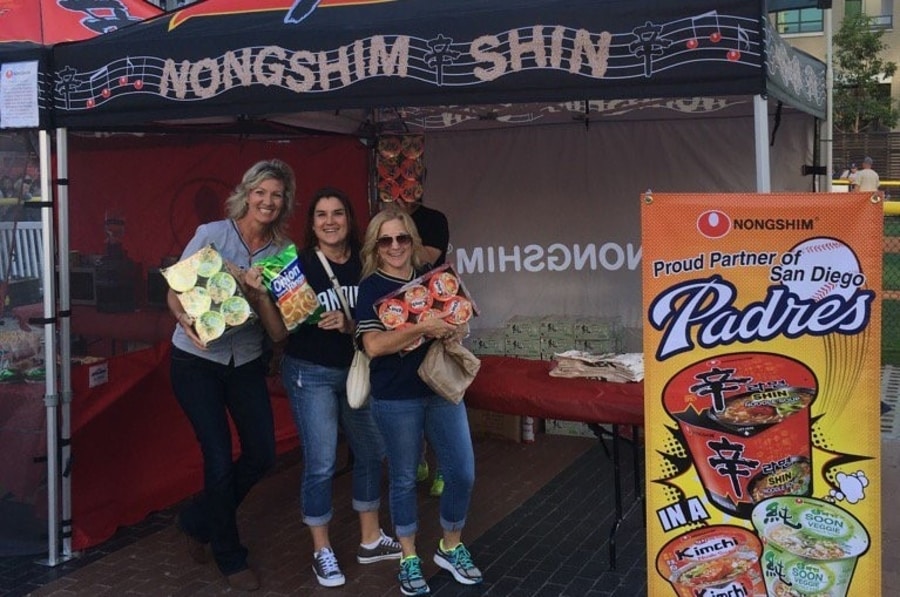
“U.S. sales grew noticeably as the COVID-19 pandemic boosted demand for ready-to-eat meals,” a company official said.
According to Scott Ellis, a Purchasing Manager at Kroger, the demand for Nongshim noodles, especially Shin Ramyun Black, rocketed as a plethora of shoppers changed their perception of the products from a snack to a meal replacement. As cooking at home has become the “new normal” amid the COVID-19 outbreak, a growing number of American people enjoy Nongshim noodles at home by tailoring them to match their flavor and dietary preferences.
Such a phenomenon pushed up sales of instant noodles at large retailers such as Wal-Mart, Costco, Kroger, and Sam’s Club. Ramen sales at Wal-Mart, Costco and Amazon ballooned 35%, 51%, and 79% in the first half of 2020.
Shin Ramyun’s popularity has been reported by several major U.S. media outlets after spreading by word of mouth among American consumers. The New York Times picked Shin Ramyun Black as the world’s most delicious ramyun whereas the LA Times also ranked this product as one of the top ramyun brands in the world.
Nongshim: Recipe for Success
Whereas a myriad of factors is attributable to Nongshim’s popularity, let’s delve into its key success “ingredients” for a winning marketing formula.
#P1 – Product: Iconic, Status-Quo-Challenging Design, Taste & Package
When Shin Ramyun was launched in 1986, the majority of the ramyun brands were material or company name-oriented – beef ramyun, Sanyo Ramyun, pickle ramyun, to name a few – and, Shin Ramyun broke the conventional concept. Whereas the health legislation of the times stipulated that the borrowed word on the food package should be smaller than Korean, Nongshim applied for law revision and gained the license for change to explicitly express the product concept of spicy taste and become the world brand. Indeed, the “Shin” word in Shin Ramyun was emphasized to define the brand concept and deliver a high-end image. Red and black were adopted as its key visuals to help the consumers fully recognize the spicy taste of the product as well as distinguish the product from others when displaying in store.
Shin Ramyun’s most crucial recipe for success is the different taste. In the 1970s, the trend in the Korean ramyun market was beef ramyun, so at that time, many ramyun companies launched beef ramyuns, which was also the first product of Nongshim. Nevertheless, Nongshim sought opportunity in order to survive the fierce competition in the ramyun market – and that opportunity was the spicy taste.

The spicy taste – as Nongshim’s core competitiveness – not only captured significant attention at home but also ramped up across overseas markets. The spicy taste in foreign diet is hot, yet Korea’s spicy taste is a mixed taste fermented from chili sauce.
Notably, dissatisfied with the status quo, Nongshim had conducted market analysis continuously. Acknowledging the unhealthy living habit of contemporary people, Shin Ramyun launched container ramyun, thus expanding the brand influence. Taking the shortage of bagged ramyun’s time and space limitations into account, Box-packed Shin Ramyun could not be limited by any space while also enabling consumers to consume instantly and easily. When entering the overseas market, especially the U.S., the box-packed Shin Ramyun still sticked to the Korean spicy taste yet adapted to the local situation.
#P2 – Price: Flexible Pricing Scheme
Taking superior quality as a core advantage, Shin Ramyun entered Korean market with higher prices than other rival ramyun brands. However, until the early 1990s, due to the economic recession and the tallow disturbance in the domestic market, the high-end strategy of Shin Ramyun gradually showed its boundary.
Thus, Nongshim decided to gradually get rid of the image of high-end ramyun; instead, the brand did marketing orientation with kind image, beginning to conduct market positioning and taking the image of common citizen as advertising spokesperson to approach the consumer. Rather than an image of abnormal high price as its initial plan, Shin Ramyun did approach the consumer with the friendly image of Korean spicy taste, making the product the national ramyun.
Consequently, Shin Ramyun was listed as MB index centralized management item in 2008 and selected as the outstanding brand in a depressed economy according to the Brand Stock Top Index released by BrandStock, which means the brand has changed into national ramyun from high-end ramyun. At present, when entering the global market, Shin Ramyun takes the original high pricing scheme, with its price in the overseas market set a little higher.
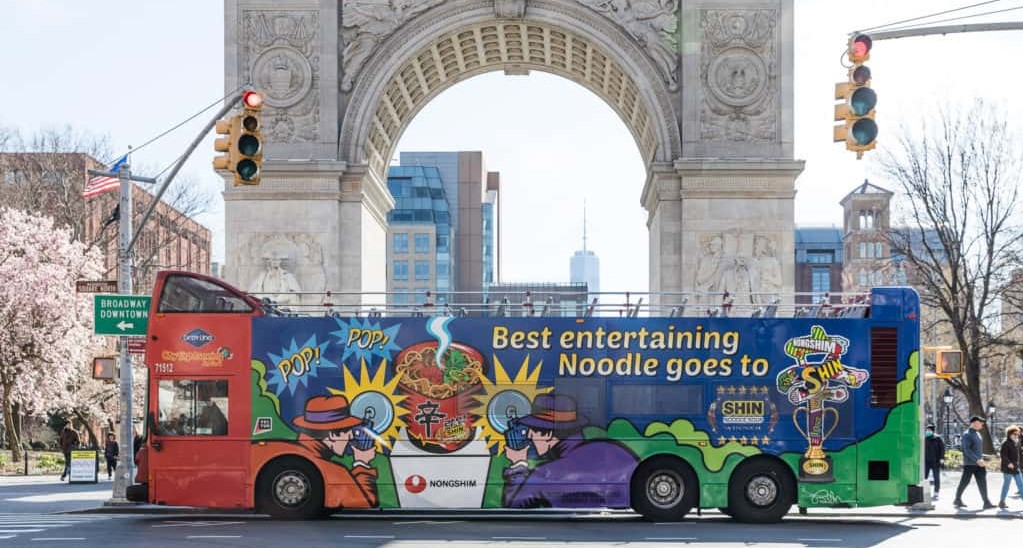
#P3 – Place: Systematic and wide-range distribution network
As already mentioned, Nongshim has taken an aggressive distribution plan to solidify its presence across the U.S. since its entry into the market. As Shin Ramyun wins good reputation, Nongshim managed to sign direct sales agreement with Walmart Supermarket owning the largest distribution network in the U.S. to conduct 1:1 direct sales. Thanks to Nongshim’s direct sales agreement, Shin Ramyun sold in Walmart took a lead in American sales.
As of mid-2017, with Shin Ramyun’s completed entry into 4,692 Walmart stores, Shin Ramyun took the honor of being “the first Korean food sold at all Walmart stores in America.” Starting with Walmart’s large-sized stores, the Korean instant noodle giant recently completed the distribution of its products even at small and mid-sized Walmart stores in small cities.
From analysts’ perspectives, all Walmart stores’ selling Shin Ramen means that Shin Ramyun’s brand took the global stage. In fact, Walmart’s products sold throughout the U.S. are mostly global food brands such as Coca-Cola, Nestle, Pepsi, Kellogg and Heinz.
Apart from Walmart, the sales channel of Shin Ramyun has been expanded not only to local superstores such as Costco and Kroger but also to supermarkets of major government agencies including Capitol Hill and the Pentagon. The corporation has been employing a strategy to expand sales of products to small-scale stores by making good use of its success with Walmart.
As a result, sales in the mainstream market surpassed those of the Asian market. Furthermore, Shin Ramyun Black became the only pack noodle available in the Amazon Go unmanned store in Seattle. Neoguri, Ansungtangmyun, and Yukejang Bowl Noodle Soup have also experienced marked sales growth by gaining popularity from Hispanic consumers.
“You can see our number product ‘Shin’ noodle soup every COSTCO and Wal Mart all over the United States. We will be continuously kept growing in the mainstream market and achieve the goal of being #1 instant noodle company in US market.” proudly stated Kevin Chang.
#P4 – Promotion: Shin Ramyun as a Kind & Friendly Brand
Upon Shin Ramyun’s launch, through the advertisement “Shin Ramyun that makes men cry”, Nongshim did trigger the strong reaction of the consumers with the Korean’s favorite spicy taste, in which the universality and worldliness of Shin Ramyun were emphasized to enhance the image and status of the leading brand.
National celebrities and famous sportsmen were invited as models to shoot commercials, giving the consumer a kind image and becoming the national ramyun. Besides, Nongshim harnessed another Korean culture aspect – K-POP – and invited global K-POP stars as brand ambassadors and models, which proved to leave a great effect of publicity.
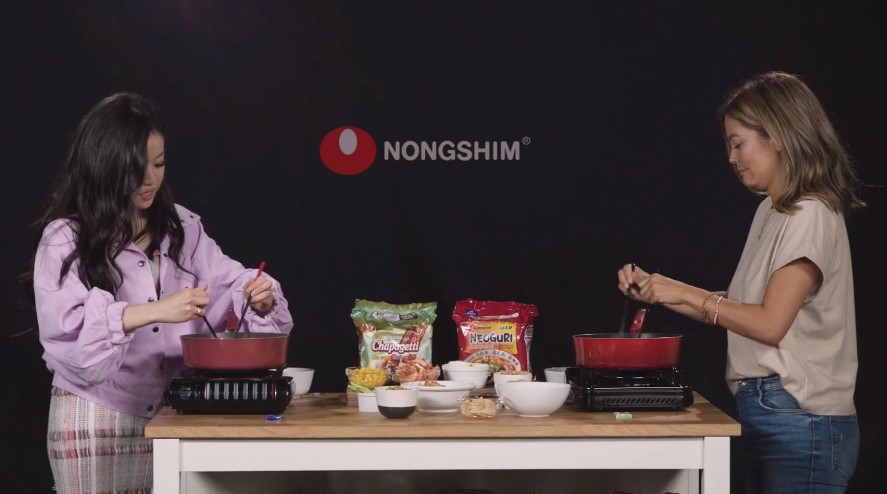
Meanwhile, the ramyun maker impresses the consumers with its kind brand image through donation marketing, to enhance its brand value and brand vitality. Since 1955, Nongshim has operated Huayan Foundation, which developed into Youlchon Foundation now, supporting the scholarship career, academic, cultural, and research activities as well as organizing such philanthropic activities as Love Concert.
In particular, Love Concert aims to help the unfortunate neighbors, including donating food items (ramyuns and other essentials) to the girl family head, elderly people living alone, and unfortunate neighbors. Through donations, Shin Ramyun indirectly sells Shin Ramyun taking advantage of the consumer psychology that they wish to purchase happiness, killing two birds with one stone and obtaining dual effect. Such an epoch-making marketing strategy not only grasp the attention of the consumers but also elevates the brand vitality of Shin Ramyun as #1. brand.
The Bottom Line
“The history of Korea’s instant noodle industry has begun Nongshim’s history. And our footprint also represents the history of Korea’s food industry.”
Having grown to the 3rd largest instant noodle maker with around 15% market share in the U.S. as of 2019, Nongshim has undoubtedly captured consumers’ hearts around the world with its differentiated spicy taste and utmost quality. Whereas both opportunities and challenges await the spicy ramyun maker in the future, its growth prospects remain promising given its stunning marketing approaches.









